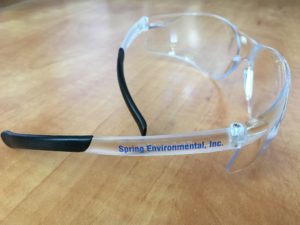Hazardous Waste is dangerous and must be managed as such, but generators can manage three types of waste under the “Universal Waste” regulations – Batteries, Mercury-Containing Equipment, and Lamps.
These wastes can be accumulated in larger quantities and for a longer period of time than regular hazardous waste. Provided that these waste streams are placed in containers that are structurally sound and prevent escape of toxic materials to the environment, and that the containers are labeled as “Used”, “Waste”, or “Universal Waste”, Universal wastes can be accumulated up to 1 year before being transported offsite. Universal waste is also exempt from counting towards your hazardous waste generator classification, can be excluded from annual hazardous waste reporting, and does not require a hazardous waste manifest for shipping (unless shipped with hazardous waste).
Washington State Generators can find the Universal Waste regulations in WAC 173-303-573 [effective 10/31/2020] and additional guidance on Ecology’s website here.
Note: For generators in other states, the federal Universal Waste regulations and guidance are available here.


